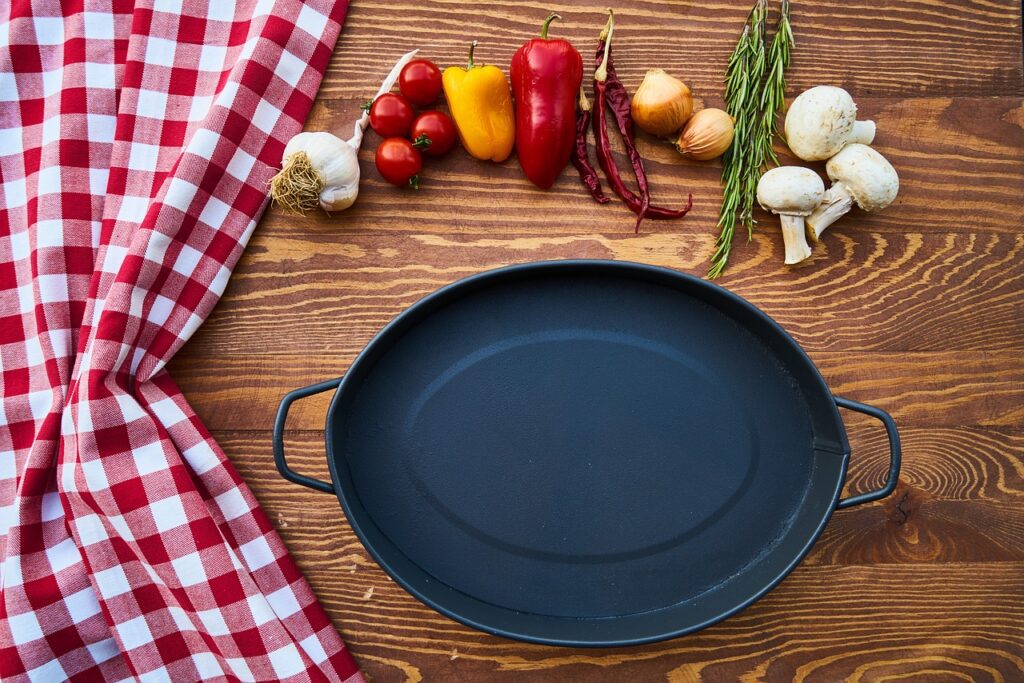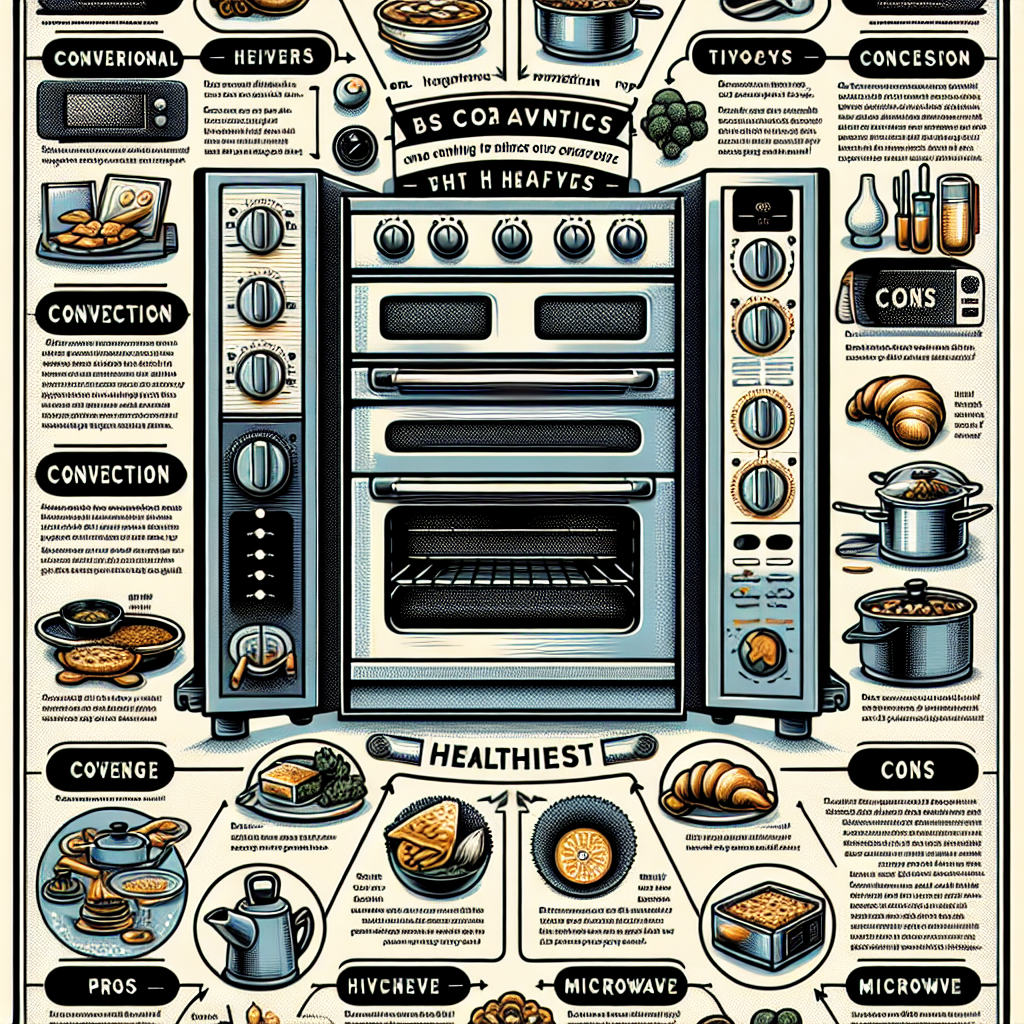When it comes to cooking, the health of the food we consume is always a top priority. But did you know that the type of oven you use can also have an impact on the nutritional value of your meals? In this article, we explore the different types of kitchen ovens available and discuss which one is considered the healthiest option. From conventional ovens to convection ovens and beyond, we break down the pros and cons of each, so you can make an informed decision for your cooking needs. Get ready to elevate your culinary game and discover the healthiest type of kitchen oven to use! In today’s fast-paced world, having a functional and efficient kitchen oven is a must. With various types of ovens available on the market, it can be overwhelming to choose the best one for your needs. Not only do you have to consider factors such as energy efficiency and food flavor, but you also need to take into account health considerations. After all, the oven you choose can impact the safety, nutritional value, and preservation of nutrients in the food you prepare. Let’s explore the different types of kitchen ovens and their respective health considerations.

Electric Ovens
Electric ovens have gained popularity in recent years due to their convenience and ease of use. They are powered by electricity and use heating elements located at the top and bottom to generate heat. One of the key health considerations with electric ovens is energy efficiency. These ovens are designed to distribute heat evenly, which means your food will be cooked thoroughly without any cold spots. This can contribute to a healthier cooking experience as it ensures that harmful bacteria are eliminated during the cooking process.
In terms of safety, electric ovens have an advantage over gas ovens. They don’t emit any toxic fumes or gases, making them a safer option for households. Electric ovens are also equipped with features such as timers and automatic shut-off, providing an added layer of safety. When it comes to food flavor and texture, electric ovens generally produce excellent results. The even heat distribution allows for uniform cooking, resulting in dishes that are perfectly cooked with desirable flavors and textures.
Gas Ovens
Gas ovens, on the other hand, are powered by natural gas or propane. They use a gas burner located at the bottom of the oven to generate heat. One of the advantages of gas ovens is their ability to distribute heat quickly and efficiently. This allows for faster preheating and cooking times, which can be a time-saving feature in the kitchen. However, it is important to consider heat distribution when it comes to food flavor and texture. Gas ovens tend to have hotter spots, which can lead to uneven cooking. To ensure even cooking, it is recommended to rotate the food during the cooking process.
Safety considerations come into play when using gas ovens. Unlike electric ovens, they produce combustion byproducts such as carbon monoxide and nitrogen dioxide. It is crucial to have proper ventilation in the kitchen to prevent the buildup of these potentially harmful gases. Regular maintenance and inspections of gas ovens are also necessary to ensure the safety of your household.
Microwave Ovens
Microwave ovens have revolutionized the way we cook and heat food. These ovens use microwaves, a form of electromagnetic radiation, to heat the food from within. The heating method in microwave ovens is different from traditional ovens as it cooks the food quickly and efficiently. When it comes to health considerations, nutrition value plays a significant role. Microwave cooking can help in preserving the nutritional value of food, as it requires less water and shorter cooking times compared to other methods. This minimizes the loss of water-soluble vitamins and nutrients.
Safety considerations with microwave ovens revolve around the potential risk of burns. The intense heat generated within the microwave can lead to steam burns if the food or liquids are not handled carefully. It is recommended to use microwave-safe containers and follow the manufacturer’s instructions to ensure safe usage.
Convection Ovens
Convection ovens are a popular choice for many home cooks. These ovens use a fan to circulate hot air throughout the cooking chamber, resulting in even heat distribution. The even heating in convection ovens contributes to shorter cooking times and energy efficiency. When it comes to food flavor and texture, convection ovens excel in producing dishes with a crispy exterior and moist interior. The circulating air helps in browning the food evenly and retaining moisture, resulting in dishes that are flavorful and tender.
In terms of energy efficiency, convection ovens are a great option. The fan helps in distributing the heat evenly, reducing the overall cooking time and allowing you to save energy. This can be beneficial for both the environment and your electricity bill. However, it is important to note that the fan in convection ovens can potentially dry out the food if not monitored closely. It is advisable to reduce the cooking time or adjust the temperature accordingly to avoid over-drying.

Steam Ovens
Steam ovens are becoming increasingly popular due to their health benefits. These ovens use steam to cook food, resulting in dishes that are moist and tender. One of the key health benefits of steam cooking is the preservation of nutrients. Unlike other cooking methods that can lead to nutrient losses, steam cooking helps in retaining water-soluble vitamins and minerals. This makes steam ovens a great option for those who are conscious about the nutritional value of their meals.
Food flavor and texture in steam ovens are well-preserved due to the gentle cooking process. The moist environment helps in preventing the food from drying out, resulting in dishes that are succulent and juicy. The use of steam also enhances the natural flavors of the food, allowing you to enjoy the full taste of your ingredients.
Toaster Ovens
Toaster ovens provide versatility in the kitchen by combining the functions of a toaster and an oven. These compact appliances are ideal for small kitchens or for those who don’t require a full-sized oven. When it comes to energy efficiency, toaster ovens are a winner. They consume less energy compared to traditional ovens, making them an eco-friendly option. The ability to cook smaller quantities of food also contributes to their energy efficiency.
Food flavor and texture in toaster ovens can be excellent if used correctly. The smaller size of these ovens allows for faster cooking times and helps in retaining moisture. However, it is important to keep an eye on the food as toaster ovens tend to have hotter spots, which can lead to uneven cooking. It is advisable to monitor the cooking process and rotate the food if necessary to ensure consistent results.

Wood-fired Ovens
Wood-fired ovens are known for their authentic cooking experience and for creating dishes with exceptional flavor. These traditional ovens use wood as a fuel source, resulting in intense heat that is evenly distributed throughout the cooking chamber. The high temperatures achieved in wood-fired ovens allow for quick cooking times and contribute to the unique smoky flavor that is characteristic of wood-fired dishes.
Heat retention is one of the advantages of wood-fired ovens. The thick walls and insulation of these ovens help in maintaining a consistent temperature, even when the fire is not actively burning. This makes it possible to cook a variety of dishes using residual heat, resulting in energy efficiency.
Food flavor and texture in wood-fired ovens are unparalleled. The intense, dry heat produced by the wood fire helps in achieving crispy crusts and tender interiors. Whether you’re baking pizzas, roasting meats, or even cooking bread, wood-fired ovens can elevate your dishes to a whole new level.
Solar Ovens
Solar ovens use the power of the sun to cook food, making them an environmentally-friendly option. These ovens harness solar energy and convert it into heat, which is then used for cooking. The health benefits of solar ovens lie in the preservation of nutrients. The gentle, slow cooking process helps in retaining vitamins and minerals, ensuring that your dishes are packed with nutrition.
Food flavor and texture in solar ovens can be comparable to conventional ovens if used correctly. The long cooking times may require some adjustments to ensure that the food is cooked thoroughly. It is advisable to preheat the oven and monitor the cooking process closely to achieve desired flavors and textures.

Induction Ovens
Induction ovens are known for their rapid and precise heating capabilities. These ovens use electromagnetic waves to generate heat directly in the cooking vessels, resulting in efficient and fast cooking. Induction cooking offers health benefits such as energy efficiency and safety. As the heat is generated directly in the pot or pan, there is minimal wasted energy. This makes induction ovens more energy-efficient compared to gas or electric ovens.
In terms of safety, induction ovens have an advantage over traditional ovens. The induction cooktops only heat the cookware, not the surrounding area. This means that the surface of the cooktop remains relatively cool, reducing the risk of burns. The absence of an open flame or hot surfaces also makes induction ovens a safer option, especially for households with young children or pets.
Combination Ovens
Combination ovens offer the best of both worlds by combining the functionalities of multiple ovens in one appliance. These ovens typically combine a regular oven, microwave, and steam oven into a single unit. The multifunctionality of combination ovens allows for versatile cooking options, making them a favorite among home cooks and professional chefs.
In terms of health considerations, combination ovens offer various benefits. Energy efficiency is one of the advantages of these ovens. The ability to use multiple cooking methods in a single unit allows for efficient use of energy, resulting in reduced electricity consumption. The combination of cooking methods also contributes to improved food flavor and texture. Whether you’re using the regular oven for baking, the microwave for quick heating, or the steam oven for healthy cooking, combination ovens offer endless possibilities to elevate your culinary creations.
In conclusion, choosing the healthiest type of kitchen oven depends on your specific needs and preferences. Electric ovens provide energy efficiency and safety, while gas ovens offer quick heat distribution. Microwave ovens excel in preserving nutrients, and convection ovens provide even heating. Steam ovens offer health benefits and flavorful dishes, while toaster ovens provide versatility and energy efficiency. Wood-fired ovens offer an authentic cooking experience and intense flavors, and solar ovens harness the power of the sun to cook food. Induction ovens provide rapid and precise heating, and combination ovens offer multifunctionality and endless cooking options. By considering the health considerations of each oven type, you can make an informed decision to find the perfect oven for your kitchen. Happy cooking!
